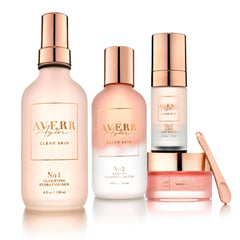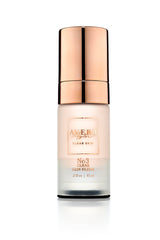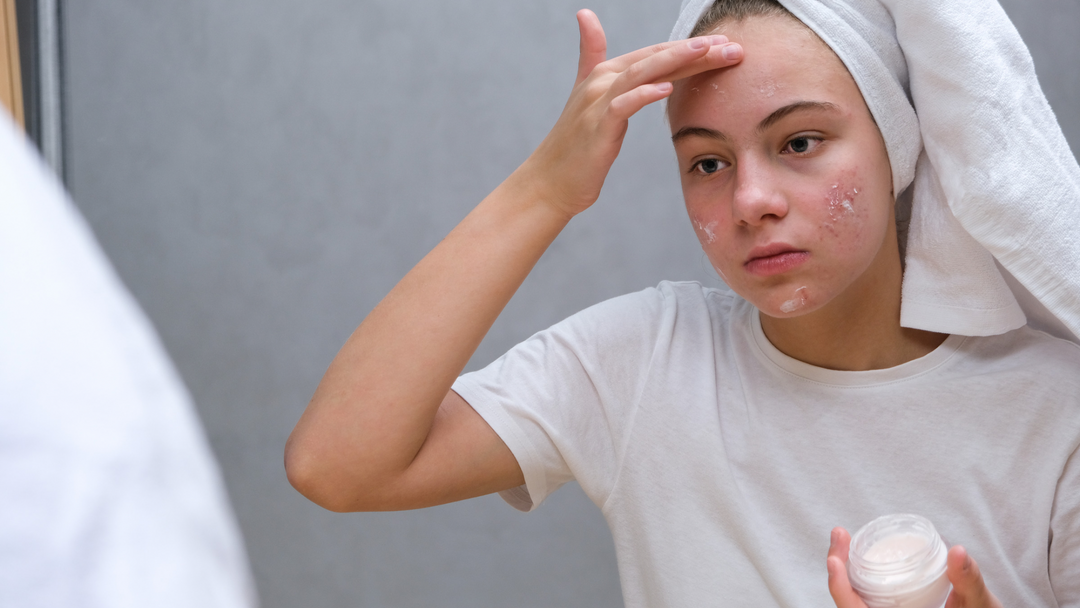So, you’re fed up with acne and looking for answers. We feel you.
During your search, you’ve probably encountered the phrase “hormonal acne.” But what does it mean? Are hormones really to blame for your breakouts?
It’s possible! Acne, especially adult acne, can be an indicator that your hormones aren’t working optimally. Breakouts may even be a sign that you’re dealing with a larger issue — namely, hormonal imbalance.
What is Hormonal Imbalance?
Hormones catch a lot of blame for our fluctuating moods, weight, and energy levels, but they’re pretty awesome.
Hormones are essential chemicals that are sent around your body to deliver signals to your tissues and organs, affecting your metabolism, mood, growth, and development.
A lot of people associate hormones with puberty, precisely because of their role in growth and development. The increased hormone activity during this period is also why many teens deal with acne. But this is a natural part of human development, and not considered a hormonal imbalance!
True hormonal imbalance is a very different problem.
Theoretically, your hormone levels should begin to regulate themselves after puberty and settle into a natural rhythm. That is until you encounter disruptions.
Hormones like to work in harmony, so if one isn’t functioning right, they’re probably all out of whack. When there’s too much of one hormone, or too little of another, their harmony goes out of tune and you are officially suffering from hormonal imbalance.
This can occur in a lot of ways. Hormones can be influenced by factors like diet, beauty products, or even our stress levels.
However, hormones are complex. Even when they’re not being influenced, they still fluctuate naturally — for example, during the female menstrual cycle, which can make it tough to identify hormonal imbalances in women.
How can you tell whether your acne is due to normal hormone fluctuations, or if you’re in a state of hormonal imbalance?
First, you’ll need to know what normal fluctuations look like!

Acne & Your Menstrual Cycle
When your cycle begins on the first day of menstruation, your hormones are already at extreme levels. Hormones like estrogen and progesterone are at their lowest, meaning testosterone appears higher.
This is great news for a workout, especially if you like to lift weights. Show those barbells who’s boss!
But for our skin, it means higher production of sebum, our skin’s natural oils. No big deal, except that sebum, makes you uber shiny and is one of the building blocks of our old friend acne.
And your hormonal shifts don’t end there.
During the luteal phase of your cycle (the last two weeks between ovulation and your next period), progesterone levels rise and compress your pores. Hooray, smaller pores! ...Except now, they’re more likely to get clogged.
Great, another stepping stone toward breakouts!
Frustrating, right? However, this is normal for many women and not necessarily a sign of imbalance. To dig deeper, there are other symptoms to look for.
How to Know If You Have Hormonal Imbalance
If you think your hormones are ebbing and flowing beyond their normal fluctuations, you can start by examining your breakouts.
Specifically, it can help to look for patterns. If your acne pops up like clockwork at the same time each month, it’s probably due to the normal fluctuations in your hormones that we discussed above.
If it’s an imbalance, though, you can support your suspicions by identifying other symptoms. There are a few telltale signs.
Signs of Hormonal Imbalance in Women
- Extreme mood swings
- Fertility issues
- Low libido
- Headaches
- Fatigue
- Unexplained weight gain
- Trouble sleeping
- Irregular or painful menstrual cycle
- Hair loss
- Excess Body Hair
- Hot flashes or night sweats
- Digestive issues
- Recurring yeast infections
- Acne
It’s time to get more in tune with our bodies. Recognizing these signs and keeping track of our cycle can warn us when things aren’t quite going with the flow.
But why does this imbalance end up showing on our skin?
How Hormonal Imbalance Triggers Your Acne
You’ve evaluated the signs, and you’re feeling pretty sure that a hormonal imbalance is behind your erratic breakouts. Several specific hormones may be to blame, such as…
1. Too Much Testosterone (or Other Androgens)
Androgen hormones like testosterone are commonly known as male sex hormones, although women also produce them, just to a lesser degree. For some women, androgen hormones can cause acne even if everything else is in balance.
An excess of androgen hormones can increase your sebum production, making your skin oilier and pores more likely to clog.
Conditions like PCOS are often associated with acne because they result in higher production of these androgen hormones.
2. Too Little Estrogen
Alongside its other roles, estrogen essentially stops the sebum-producing effects of testosterone, keeping oiliness in check.
So if you’re dealing with persistent acne, you might have too much testosterone, or it might be that your estrogen levels are low, making testosterone appear elevated in comparison.
3. Too Little Progesterone
When our progesterone levels are sailing smoothly, they keep sebum levels in check by preventing too much testosterone from converting to DHT. Too much DHT throws your sebum production into overdrive, which is why too little progesterone is terrible news for your complexion.
What Is Causing My Hormonal Imbalance?
Hormones go out of balance for a reason. It’s not like testosterone just has a bad day and decides to start bullying all the other hormones.
No, something is interfering with your hormone levels! Maybe something like...
1. Stopping Birth Control
Birth control pills are primarily made up of estrogen and progestin. As we now know, estrogen suppresses the oily effects of testosterone and other androgens. That’s why the pill is often prescribed to deal with acne.
However, if you’re coming off the pill, you may experience an “androgen rebound” as your androgen production reboots.
This can cause Post-Birth Control Syndrome, a type of acne that can appear anywhere on the body as androgens like testosterone start to reassert themselves on your skin and pores.
2. Stress
We all know stress is bad for us. But if you’re struggling to relax, your skin also suffers. The more we stress, the more our body generates those sebum-producing androgen hormones, leading to clogged pores and breakouts.
3. Diet
The pressure to meet global food demands has resulted in more pesticide-sprayed crops, which are, in turn, linked to hormone disruption among people who eat them.
But it’s not just pesticides that could be behind your hormonal imbalance. Dairy, for one, has also been linked with acne. It spurs the production of androgens like DHT, the hormone linked to sebum production.
4. Household & Personal Care Products
Plenty of products found in our homes and on store shelves are formulated with ingredients that can wreak havoc on our hormones. Parabens, phthalates, and phenols are just a few that have been linked to hormone disruption.
How To Treat Hormonal Acne
If you’re experiencing one or more signs of hormonal imbalance, the first step is to see a medical professional. They can help you pinpoint the exact root of the issue.
However, there are a few things you can do in the meantime to show your endocrine system some TLC (and maybe eliminate your acne along the way!):
- Choose organic food where possible
- Cut out or limit your intake of dairy
- Practice mindfulness techniques to reduce your stress levels
- Hormonal support through supplements such as zinc picolinate, saw palmetto, DIM, vitex, beta-sitosterol, or maca powder
- Switch to more ‘clean and green household and personal products
We especially love this last point. Choosing clean products is a surefire way to lower your risk of exposure to harmful toxins, drying chemicals, and hormone disruptors!
To help you make the change, we’ve even shortlisted some ingredients to avoid when choosing new skincare.
The truth is, you don’t need harsh synthetic ingredients to treat acne. Natural ingredients can help tackle your breakouts just as effectively but without all the unnecessary health dangers and side effects!
That’s why we formulated our Averr Aglow skincare range with ingredients that work synergistically with each other and your skin.

Our Luminous Clear Skin Kit is kind to your complexion and respects its natural state of balance. It effectively gets into pores and clears away excess sebum build-up, without depleting essential skin oils that are so important for hydration.
Plus, they are formulated without any nasty, hormone-disrupting chemicals! Just one of many reasons that customers adore our products.
Feel confident about addressing your hormonal issues. No more backsliding with products that exacerbate the problem.
Because you deserve better! Listen to your body, trust your instincts, and give your complexion what it needs…
Its natural glow! xx













